If you’re going to lend a hand or ask for a helping hand while you’re afloat and you’re beyond an arm’s reach, you’ll need a length of line to connect across the water. Whether or not you’re able to quickly pull some unfortunate out of the drink or have someone keep you from drifting away from a dock depends on how well you’ve prepared the line for throwing.
For my 36′ monkey’s-fist heaving line I’ve been using a simple coil, twisting the line with each loop to get it to lie flat against the other loops. This works consistently and doesn’t tangle when thrown. The U.S. Coast Guard uses the same method, but neatly making the coil takes a bit of time and attention to ensure that the loops are even and not twisted. I was once handed a hastily coiled line to throw from the boat I was aboard to a dock during a boat festival with dozens of nautically knowledgeable people watching and no time to recoil it. I knew what was going to happen: it would land in a bird’s-nest clump halfway to the target.
There are two other ways to coil a throwing line quickly and effectively: the butterfly coil and the figure-eight coil, which is known in whitewater-river circles as the TRU coil (for Thompson Rivers University). Both alternate the loops of the coil, so no twisting of the line is required to relax them.
The butterfly coil is like the standard coil in that loops are laid in one hand, but instead of making them all in the same direction across the palm of that hand, they’re made on either side of the palm.
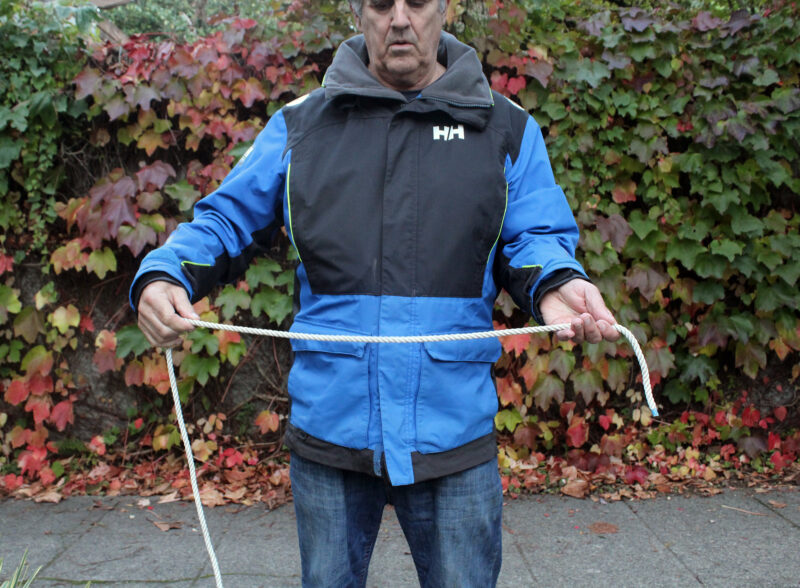 Photographs by the author
Photographs by the authorHold the end of the line in your left hand, palm up, with the end extending to the left. Hold the line in the right hand, palm down, at a bit more than a shoulder width.
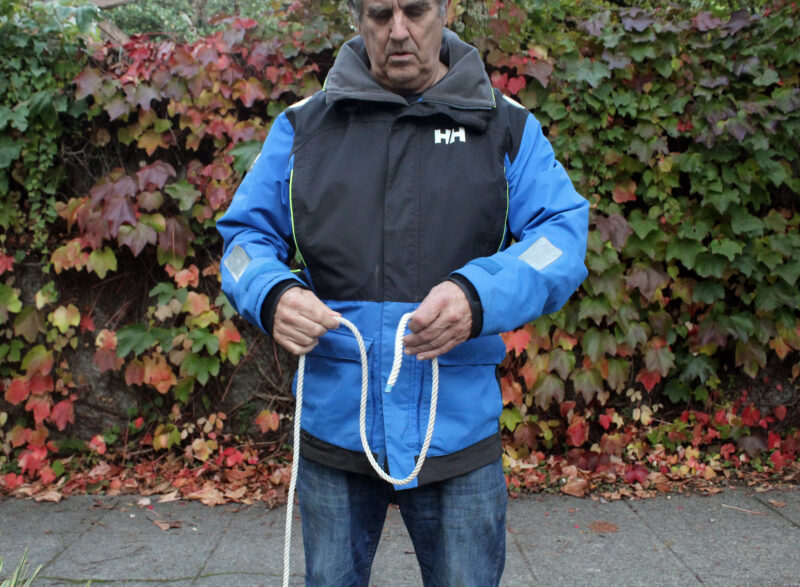
For the standard coil, you would bring the right hand over the left and lay the line across the palm from left to right. For the butterfly coil, the hands come together to form a bight. The left hand turns palm inward to take hold of the line that extends from the right hand.
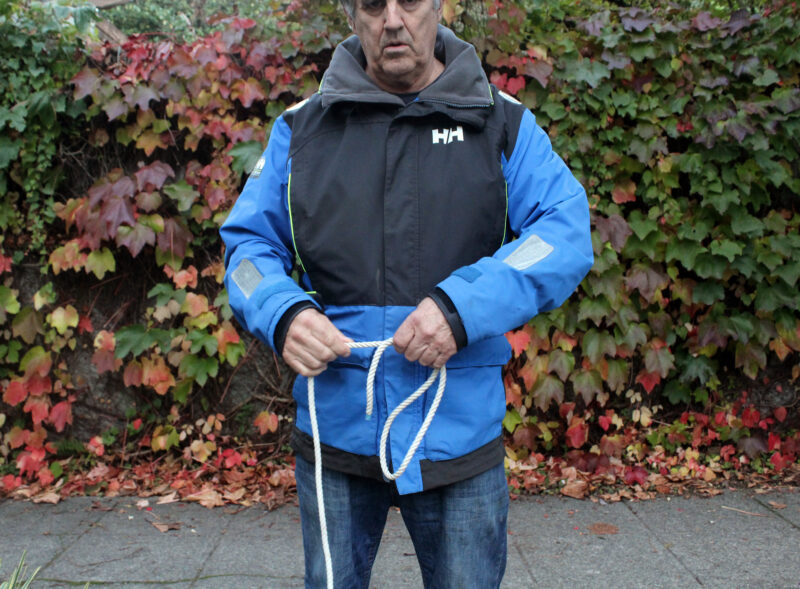
The left hand holds the bight, which is on the pinkie finger side.
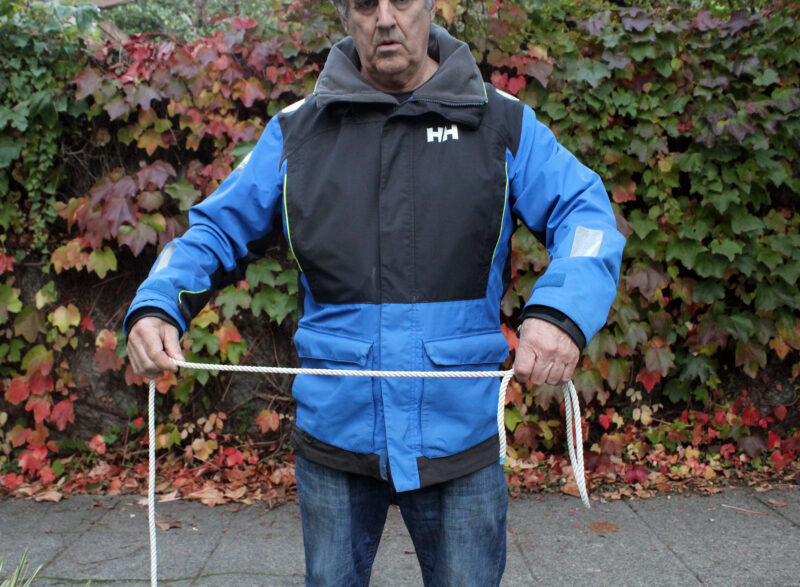
The hands separate to gather a length of line for another bight. The left hand holds while the right hand slides along the line.
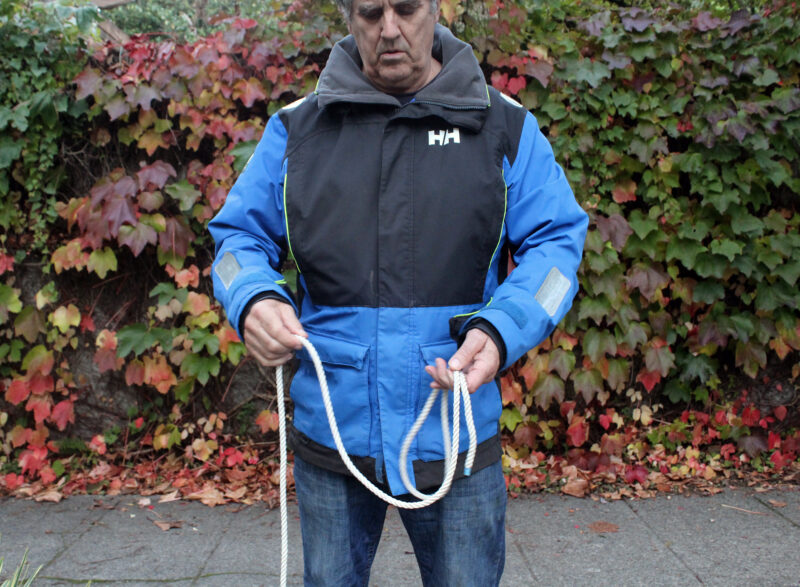
As the hands come together to form the bight, the left hand turns palm up.
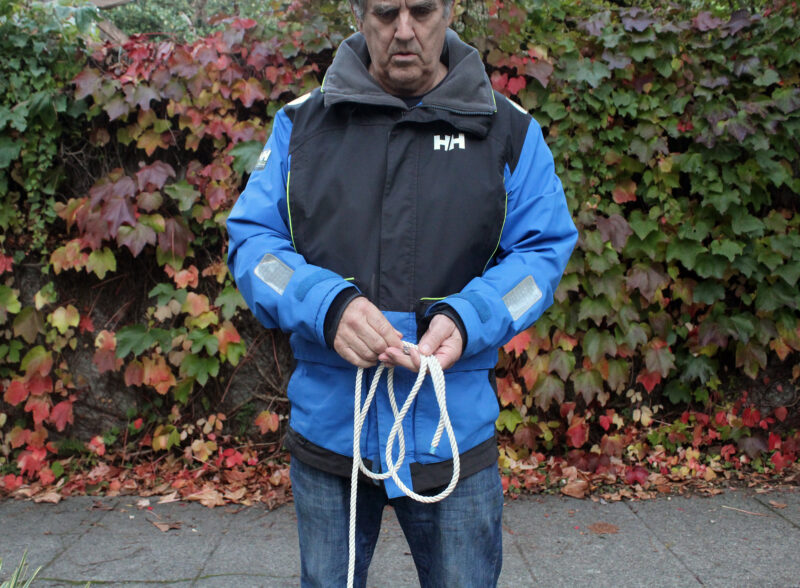
The right hand lays the line across the fingers of the left hand, forming the bight on the left hand’s index-finger side.
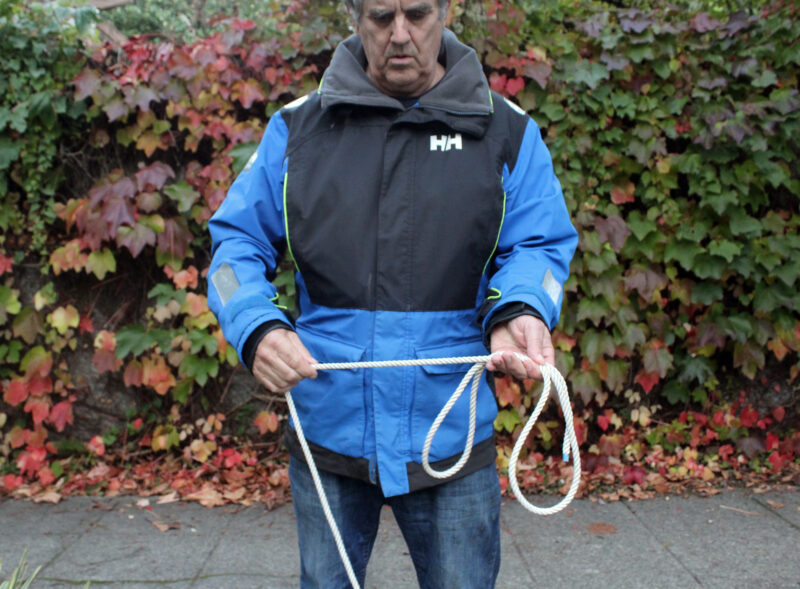
The hands part again and the process repeats.
The figure-eight coil is a modification of the landlubber’s way of wrapping line in loops along the forearm and around the left thumb and elbow, a method sure to create a tangle.
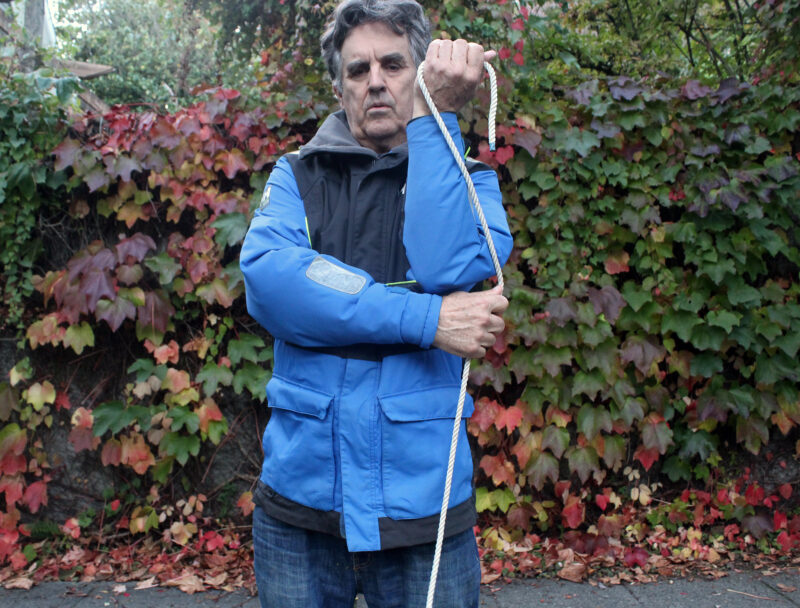
For the figure-eight coil, hold the line in the left hand, palm inward and the end of the line extending on the index-finger side. With the right hand, bring the line down and across the forearm.
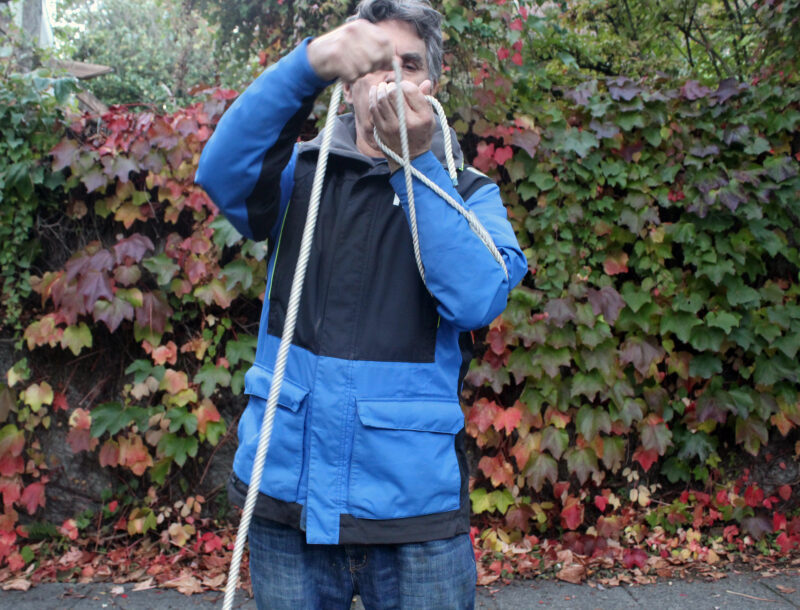
Loop the line under the elbow and bring it up and across the forearm.
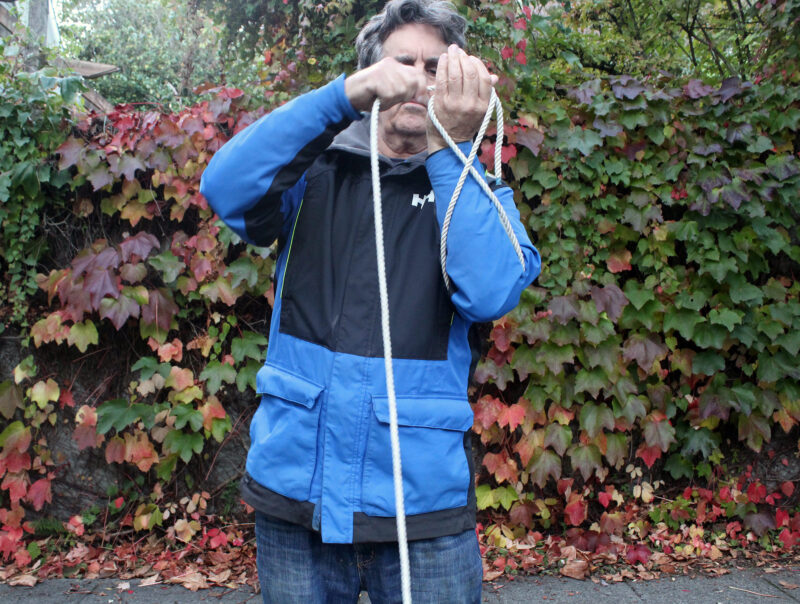
With the right hand, pull the line across the left palm from index finger to pinkie.
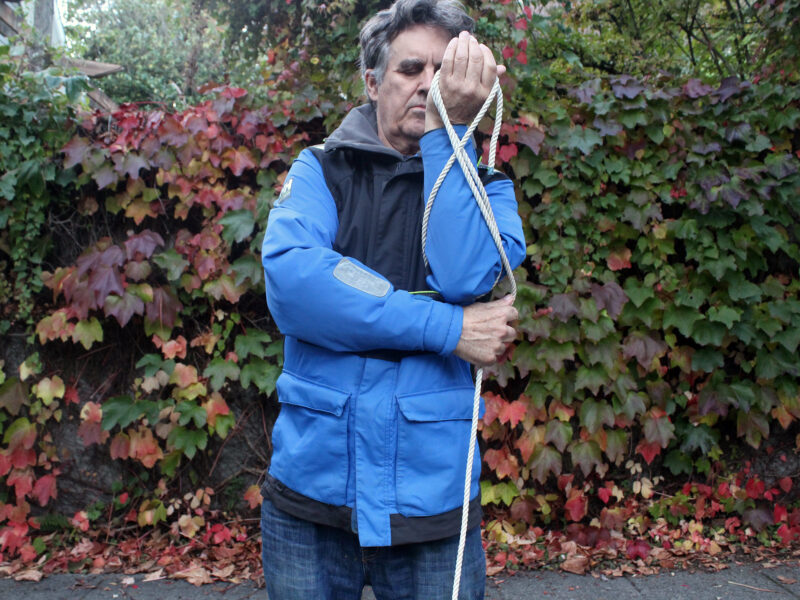
Bring the line down and across the forearm.
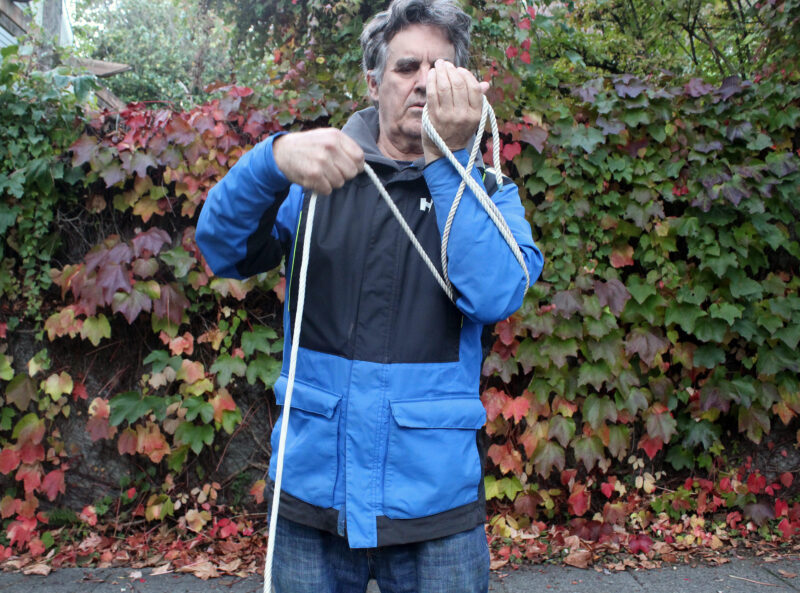
With the second turn under the elbow the process repeats.
With practice, both methods can be done very quickly. With the butterfly method, it doesn’t matter how long or even the coils are; with the figure-eight method, the loops are sized automatically.
These coils are ideal for making repeated throws of a rescue throw bag if you miss the first time. You retrieve the line as you make either coil and when the bag is back with the coil you’re ready to throw them together.
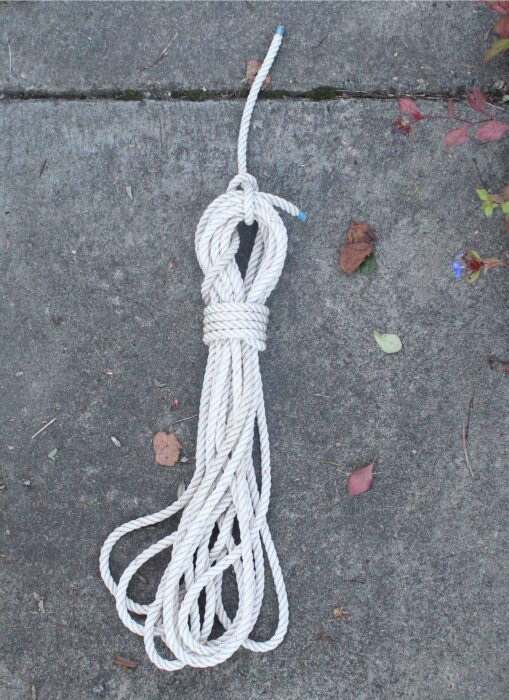
The figure-eight coil finished for storage may look like a common coil.
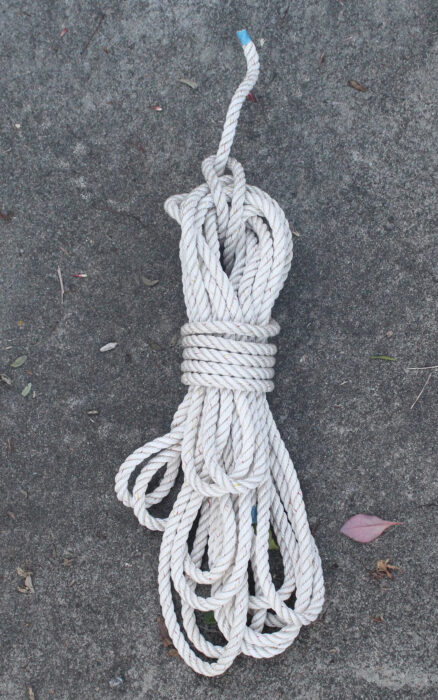
The butterfly coil may have uneven loops when coiled for storage.
Both the butterfly and the figure-eight coils can be secured for stowing by leaving a yard or so of line at the end of the coils and using it to make a few frapping turns around the coil below the left hand, adding turns upward. With a few feet of line left, pull a bight though the top arch of the coils as you remove your left hand. Then bring the tail end over the top of the coil, tuck it through the bight, and pull it tight.![]()
Christopher Cunningham is the editor of Small Boats.
You can share your tips and tricks of the trade with other Small Boats readers by sending us an email.
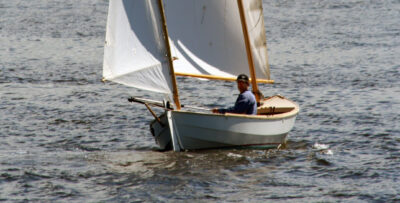



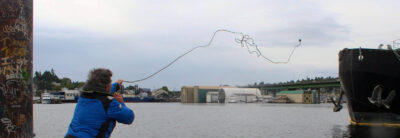
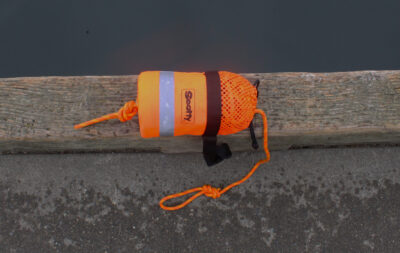
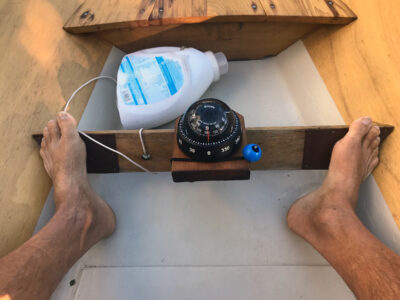

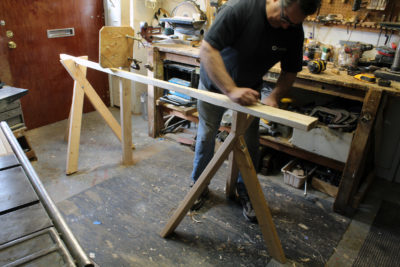
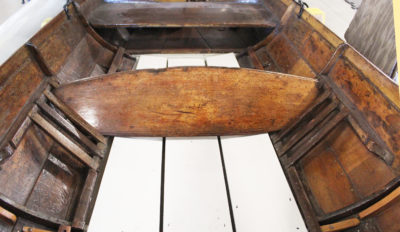

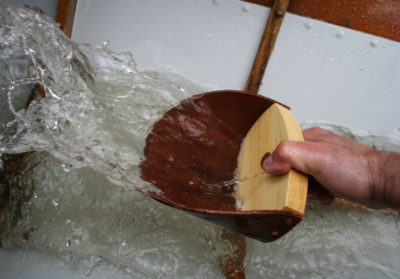
I have no quarrel with the line coiling methods shown in this article but there are a few additional tips in making up and then actually heaving the line, from when I learned heaving line technique in the Canadian Navy eons ago. The caveat for what follows is that a heaving line was always just a messenger line for a larger one that was fastened to it once the heaving line was got across.
First is that the line shown is probably thicker than it needs to be if it is just a messenger line. Back then, we used 1/8 – 3/16” dia double-braided nylon – worked just fine. Second is that, if you want to heave a line a long distance, ie greater than 50 feet, you need a weighted monkey’s fist on the end of that light line. Make your monkeys fist with a SS nut in the middle to give it real heft.
When you are getting the line ready to heave, wrap a full loop of the “bitter end” around the non-heaving hand, so you don’t accidentally let go of the whole lot when you heave the line. If you have a long line (and they should all be longer than 50’ in my view), only take half the coils in your heaving hand, together with the monkey’s fist, and leave the other half of the coils laying on the palm of your non-heaving hand. When you go to heave the line, swing your hand out sideways in a relatively flat arc towards your target. The shallower you can make the arc, the less windage the coil will have as it pays out. If you have done the heave properly, the monkey’s fist will lead, the first half of the coil will follow and the second half of the coil will pay off your hand smoothly. It might take some practice before you get it right.
Using this technique, I saved the skipper of our frigate from considerable embarrassment as we were coming alongside another ship tied to the jetty. He had misjudged both the distance off, and the strength of the off-the-jetty breeze, so that the ship began to drift away as he stopped engines. I was on foredeck heaving line duty. When the order was given to heave the line, we were at least 75 feet off, moving away and the wind was noticeable. I managed to execute one of my better tosses and the line sailed across and hit the other ship’s forward gun housing square on, where it dropped to the deck and was picked up by the other crew and the mooring line secured to it. No face-losing go-around required.
Spot on Alex! In commercial shipping we did the same. It’s amazing just how far that line will go. Listen to Alex, folks!
Line throwing is something I was never taught nor thought of much. I have attempted to toss a line to a handler in non-critical situations. Those attempts mostly had to be repeated. They were a real hash-up and would have been totally embarrassing except that no one else around could do it any better. And everyone knew that!
But I do like to be prepared and I like to be helpful in every situation. So I think I’ll do some practicing. Coiling first, so it becomes habitual. Then throwing. That will be interesting… I don’t throw anything very well these days. And the deer I’m trying to chase from our garden know it!